
The 'Nana' generation
BY ANA VECIANA-SUAREZ
aveciana@MiamiHerald.com
As the American population ages and grandparents become more tech-savvy, a growing number of manufacturers are designing souped-up -- or stripped-down -- gadgets for the senior set. The devices boast larger fonts, brighter lights, bigger knobs and louder sound.
The generation that grew up before the arrival of TV, the dawn of cellphones and the advent of the Internet may prove to be the healthiest segment of the tech market yet. From talking pill bottles to bathroom scales that record information for physicians, these gadgets are part of what some have dubbed ''nana'' technology.
''In a market that has stayed essentially flat, this makes good business sense,'' says Robin Raskin, New York-based tech consultant who has advised such companies as Sony, Intel and Nickelodeon. ``You're going to see a whole bunch of designers doing a whole lot of focus groups and testing to try out their products.
``Actually, they already are.''
Wearing special suits or equipment to simulate the effects of advancing age, researchers and designers use ''empathy sessions'' to develop devices. The AgeLab at MIT, for instance, recently released AGNES 2.0, which consists of pads and elastic wraps that hamper movement in order to imitate the effect of arthritis and spinal deterioration. The Macklin Intergenerational Institute in Ohio asks trainees to wear vision-impairing glasses before trying to read maps. And at GE's industrial headquarters, some employees shove cotton balls in their ears to simulate hearing loss.
Seniors tend to adopt technology for specific reasons: safety, health, independence or social engagement. They also want easy-to-use gadgets that compensate for diminishing vision and hearing.
The perfect example is the Jitterbug phone, with its ear cushion that reduces background noise and a speaker that makes the sound loud and clear. It also has bigger, backlit buttons and bright text.
''Our research shows that they're anxious to participate,'' says Sara Czaja, co-director of the Center on Research and Education for Aging and Technology Enhancement at the University of Miami. ``But they're looking for specific things -- usefulness and not too complicated features.''
SILVERS SUMMIT What's more, unlike those bulky senior-friendly products of yore, the new generation of gadgets comes in attractive sizes and shapes -- and for a dizzying variety of purposes. The appeal, and the need, is such that the annual Consumer Electronics Show in Las Vegas hosted its first all-day Silvers Summit Conference on devices and technologies this past January.
Among the senior-friendly devices are navigation systems that find comfortable routes, simplified TV remotes, bathroom scales that asks how you're feeling and records answers for your physician, and washing machines with large knobs that also make a louder noise when they're set -- for customers with arthritis or impaired vision or hearing.
Marketing studies show that America's seniors are very receptive to technology and are using lots of it already -- under the right conditions. Seventy-eight percent of 50- to 54-year-olds are online, as are 45 percent of 70- to 75-year-olds, according to a study conducted for the Consumer Electronics Association. More than seven million boomers own gaming systems and 29 million own digital video recorders. Another survey found that DVD players, digital still cameras, broadband and cellphones were the most popular gadgets for the 60-and-over set.
Terry Rohm is one of them. When her daughter vacationed in Colorado in April, the retired school administrator followed her grandchildren's antics on Twitter. To exercise, she uses the popular Wii Fit and keeps in almost-daily contact with her other children in Atlanta via e-mail.
''Once you get past the fear factor, it's fun to use,'' Rohm says of her gadgets. ``You don't have to use everything, just what you want and need.''
TOO BIG TO IGNORE Raskin, the tech expert who was a Silvers Summit co-founder at this year's electronics show, says the ''time is ripe for attention'' after years of benign neglect from retailers and advertisers who traditionally focused on the younger set. Now the senior market is too big to ignore -- and experts predict it will only get bigger.
Americans age 65 and older make up more than 12 percent of the population. By 2030 they'll comprise about 20 percent, with those over 75 clocking the fastest growth. When you count Americans 50 and older, that number swells to 31 percent of the U.S. population.
Moreover, this group has disposable income. The 78 million Americans who were 50 or older as of 2001 controlled 67 percent of the country's wealth and accounted for an estimated $2 trillion in total expenditures in 2005, according to SmartSilvers Alliance, an organization that promotes the development of consumer-friendly products for seniors.
If you factor in baby boomers, those born between 1946 and 1964, the number of seniors will comprise a demographic tidal wave. ''It's that cohort, the 74 million strong, that has been the tipping point,'' says Elinor Ginzler, a senior vice president for AARP. ``They want things for their parents and for themselves. The market is simply responding to the demand of sheer volume and spending power.''
KEEPING IN TOUCH Suanne Piero of Coral Gables keeps in touch with her far-flung relatives -- a son in Australia, another in Charlotte, a sister in Vancouver and a brother in San Diego -- through the Internet. She loves to watch videos on her DVD, and her favorite device once sounded like science fiction to her: Skype.
Using a webcam and the free Skype software downloaded from the Internet, she talks to her son, daughter-in-law and 9-month-old granddaughter, Victoria, two and three times a day from their home in Victoria, Australia. She has watched the little girl crawl, eat, smile and coo as if she were in the same room.
''It's so wonderful!'' she says. ``I've been able to see all the phases of her growing up. She knows who I am. She even waves at me.''
Piero admits she was a bit reluctant about using Skype. But after her first experience, she was hooked. ''I wouldn't have ventured out if not for my granddaughter,'' she says. ``But I rave about it to my friends all the time.''
Some predict that many of these gadgets will find acceptance in the general population. We're already seeing this as manufacturers make their devices, originally intended for the older market, more aesthetically appealing
''If they're universally user-friendly -- and that's the point -- you don't have to be of a certain age to want them,'' says Majd Alwan, director of the Center for Aging Services Technologies in Washington, D.C. ``These can make life easier for all of us.''




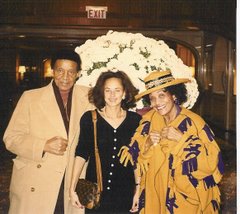
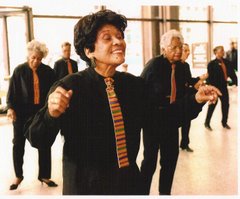
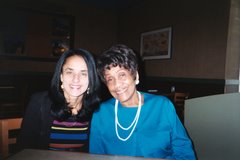
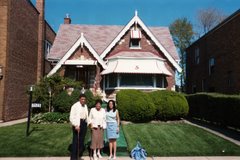
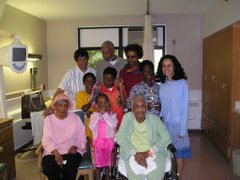

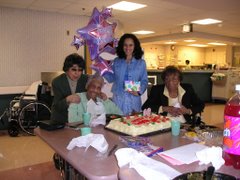
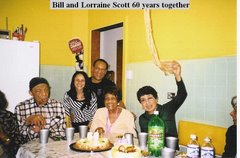
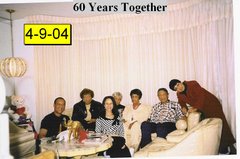
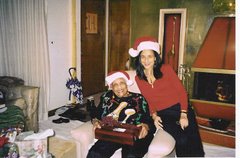
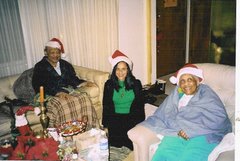
.jpg)